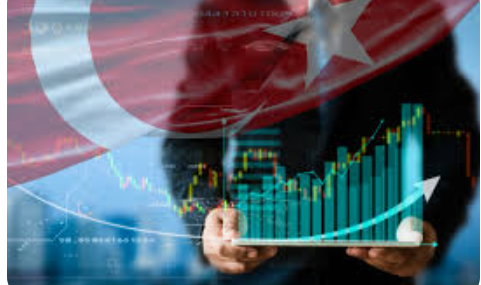Q? So 18 months into the Simsek programme where are we?
Answer – Mixed bag, to be fair. But I would tend to view things thru a glass half full prism. To mix metaphors, Turkiye was facing a systemic crisis in mid 2023, with a freight train coming head on towards it in the tunnel. That train seems to have been diverted and there is now light at the end of the tunnel. Simsek and team have engineered a way thru to avoid that systemic train crash. But they are not there yet, and need to maintain reform speed for sometime yet.
To be fair to Simsek and team, it is pretty remarkable what they have achieved, given the extreme situation they faced upon taking office of rising inflation, uncapped inflationary expectations, a basically bankrupt central bank with no credibility, limited gross FX reserve cover, and a massive negative net international reserve position, with the currency on a strong depreciating trend, a wide current account deficit, large gross external financing needs, the ticking time bomb of the KKM, and zero credibility in the economic policy settings and team they inherited. My base case, had Simsek and team not been hired was a systemic banking, balance of payments and sovereign debt crises, akin to 2001. That was avoided which was a result in itself, but over the past year, they have managed to:
* Hike policy rates, against expectations from 8.5% to 50%, and remember here most expectations had been for an opposition win in the May 2023 elections to push policy rates to nearer to 35-40%. Note also on a compound basis policy rates are actually closer to 65%, which implies real rates of over 15%, amongst the highest across EM;
* Stabilise the lira, managing modest nominal depreciation and some real appreciation;
* Rebuilt gross reserves by over $100 billion, now to record highs of over $150 billion and close to a year’s adequate reserve coverage as per IMF definitions, plus cut the negative NIR position from $60bn to plus $30 billion plus;
* Reduced the current account deficit from the prior 3-4% of GDP to nearer to 1% of GDP;
* Cut the KKM liability by over $100 billion without the expected acceleration in FX reserve depletion;
* Made some progress in bringing down inflation, with headline cut from over 70% to just under 50%, and likely to end the year around the 42-43%;
* Improved risk perceptions of Turkiye, with 5 year CDS cut from over 700bps just after the May 2023 election to around 270bps now;
* New found confidence in Turkiye has been reflected in over $22 billion in portfolio inflows over the past year, helping underpin the lira and FX reserve coverage;
* secure numerous ratings upgrades – two notches by Fitch and Moodys, and likely a similar move expected this week from S&P.
Disappointingly, inflation, while falling, remains very high and sticky, as are inflationary expectations. And at this stage it feels as though, while it has been relatively painless to cut inflation from the highs (real GDP growth has not slowed that much, and unemployment remains remarkably low despite the hike in rates and the real appreciation of the lira, at around 8.5%), taking inflation much lower will be difficult without additional hefty sacrifices on the growth front. The CBRT is struggling to kill inflation expectations with household expectations showing 67.2% one year ahead inflation.
So far there has been very little growth give up, but I do not know any country which achieved such a large disinflation without a growth sacrifice and I worry still that Turks are not yet prepared for this. To some extent this has been reflected in the wishful thinking we have seen in recent months around early CBRT rate cuts. If the CBRT is to break the back of inflationary expectations and inflation it needs to hold policy rates high, and higher for as long as possible.
Now true, Simsek and team would argue that their efforts on the disinflation front have been clobbered to a degree with electoral maths, and the large 49% minimum wage hike in 2023, then the early retirement reform as part of the give away for the last election. The latter cost the budget an estimated 1% of GDP in 2023 and 1.7% this year. The combined fiscal impulse with the earthquake response was 4.6% of GDP in 2023 and 3.3% of GDP in 2024. This meant the CBRT has been fighting against a fiscal tide, boosting inflation in both 2023 and 2024. The hope is that we finally see fiscal policy tighten in 2025 and this helps the disinflation, but perhaps a lot of the damage has been done via now elevated and entrenched inflationary expectations. All this means that unless fiscal policy and incomes policy really work to do some of the heavy lifting for the CBRT, the central bank will have to remain very hawkish for much of 2025 – perhaps holding policy rates thru to mid 2025, at least. Now that will be politically very challenging.
This is only a tiny excerpt from a larger blog, which can be accessed by clicking here
Follow our English language YouTube videos @ REAL TURKEY: https://www.youtube.com/channel/UCKpFJB4GFiNkhmpVZQ_d9Rg
And content at Twitter: @AtillaEng
Facebook: Real Turkey Channel: https://www.facebook.com/realturkeychannel/
